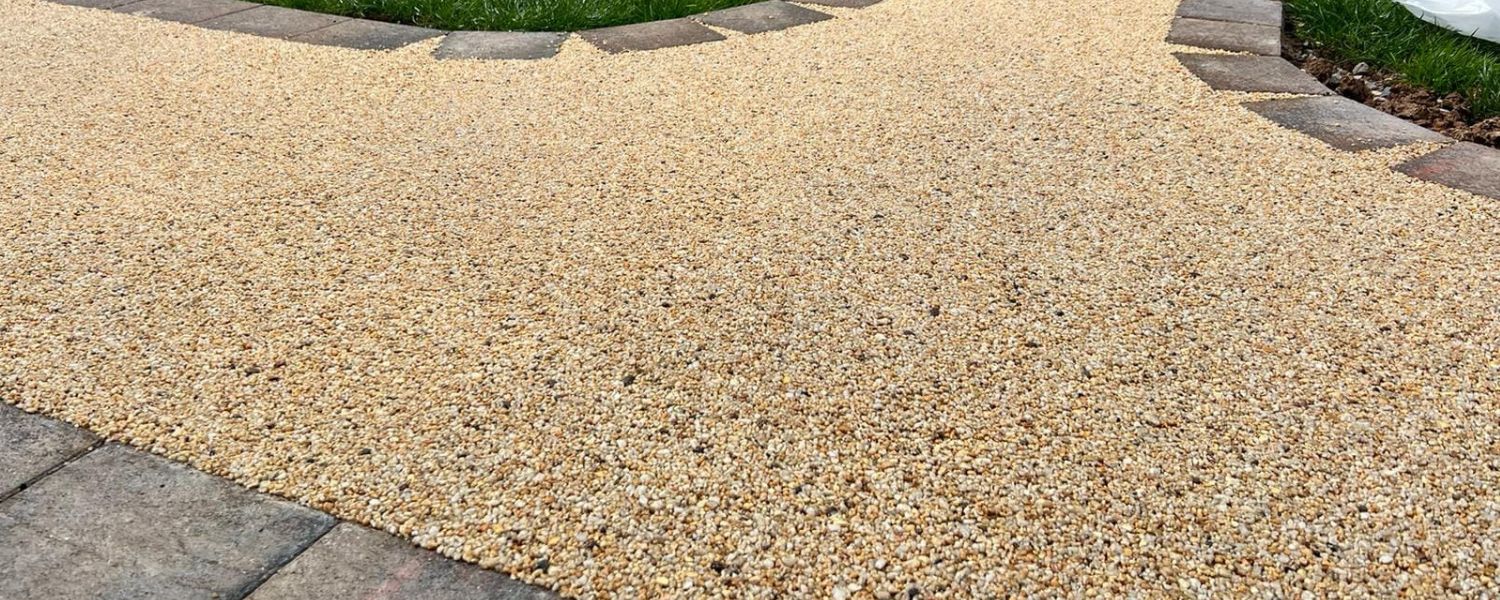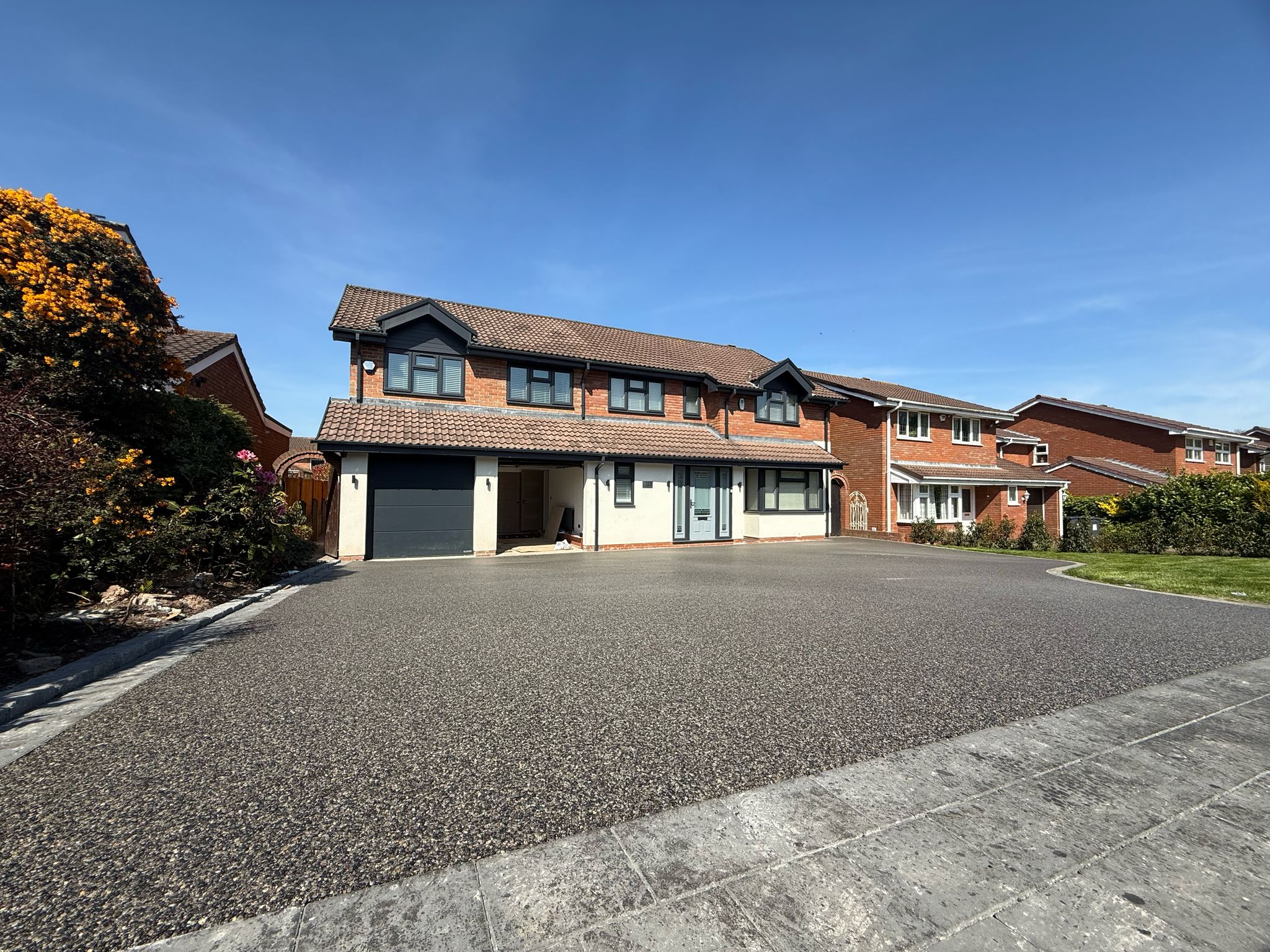Resin Bound Colours and Aggregates: How to Choose the Best Blend for Your Birmingham Home Style
Choosing the right resin bound colour and aggregate blend can transform your driveway from purely practical to the standout feature of your Birmingham home. Whether you live in a red‑brick terrace in Harborne, a period property in Moseley or a contemporary new build in Edgbaston, the colour, stone size and finish you pick will set the tone for your kerb appeal for years. This guide explains how to choose resin bound colours and aggregates that complement your architecture, brickwork and landscaping, while also considering durability, UV stability, slip resistance and maintenance.
Start with your home’s fixed features
- Brick and mortar tone: Birmingham’s classic red and brown brick pairs beautifully with warm, honeyed blends (think Cotswold, Autumn Quartz, Golden Pea). Pale greys can provide modern contrast against darker brick.
- Roof and windows: Anthracite frames or slate roofs suit cool greys and charcoals (Sterling, Silver Grey, Graphite). Cream or timber frames often work better with warmer neutrals.
- Paths and edging: Decide whether you want your driveway to blend or contrast with edging stones, kerbs and pathways. A subtle tonal shift (e.g., mid‑grey drive with darker basalt edge) looks premium.
- Garden palette: If you have lush greenery, cooler blends intensify the contrast; if your planting is Mediterranean/gravel‑based, warm blends feel cohesive.
Aggregate size and shape: not just looks
- 1–3 mm: Finer texture, sleek look, but can reveal tyre scuffing more readily; usually reserved for footpaths.
- 2–5 mm: The driveway sweet spot—balanced permeability, strength and aesthetic depth.
- 4–6 mm: Chunkier, more textured look; good for visual grip on slopes and heavier vehicle areas.
- Rounded vs angular: Angular stones interlock for strength and improve traction; rounded stones offer a softer, more “river‑washed” look but are typically blended with angular material for performance.
Maintenance visibility by colour
- Light blends: Brilliant for brightening shaded frontages, but they show oil drips and tyre shadowing sooner—keep a mild degreaser handy.
- Mid‑tones: The easiest to live with, hiding everyday dust and minor staining.
- Dark blends: Great at disguising marks, but can reveal dried salt or pollen films—simple rinses help.
Matching Birmingham styles: examples
- Red‑brick Victorian/Edwardian: Cotswold quartz, Autumn Quartz, Golden Pea or mixed warm granites complement brick, sills and original detailing.
- 1930s semis with bay windows: Mid neutrals like Meadow, Dorset Gold, or a natural granite mix to harmonise with render and brick bands.
- Contemporary infill/new build with anthracite: Silver Grey, Sterling, Arctic or Graphite for a crisp, architectural feel; consider a darker border for definition.
- Period homes in conservation pockets: Natural, understated blends often align better with local character; avoid overly bright aggregates and opt for softer, buff‑leaning mixes.
Sustainability and SUDS
Resin bound systems are permeable when installed over the right base, easing compliance with front garden surfacing rules and helping reduce run‑off. Choosing aggregates from durable, responsibly sourced stone also supports longevity—fewer replacements, less waste.
Colour families and what they say:
- Warm neutrals (beiges, honey, Cotswold): Welcoming, timeless, great with red brick and traditional façades. They hide dust and light debris well.
- Cool greys (silver, granite, charcoal): Clean, contemporary, ideal for modern architecture and anthracite trims. They showcase crisp lines and minimalist landscaping.
- Natural mixed blends (quartz and granite mixes): The “all‑rounders” that sit comfortably with both old and new, adding depth through multi‑tone aggregates.
- Bold accents (rich reds, dark bronzes): Best used sparingly or as borders; full‑drive bold colours can dominate smaller frontages.
UV stability and colour fastness
- Choose UV‑stable resin: Essential to avoid ambering that can distort pale blends. Consumer Resin specifies UV‑stable systems for consistent colour over time.
- Natural stone variability: Granite and quartz are colour‑fast. Some marbles and limestones can be lighter and may show surface contamination more visibly—factor this into maintenance expectations.
Slip resistance and safety
- Blend and finish: Multi‑tone mixes with angular 2–5 mm aggregates give reliable grip without harsh texture.
- Additives: Anti‑slip broadcast can be incorporated during install for slopes or high‑traffic turning areas—this won’t dramatically change the colour but improves micro‑texture.
- Colour vs slip: Very dark, smooth‑looking blends can appear “sleeker” but with the right aggregate mix they remain safe underfoot.
Borders, bands and layouts
- Edge definition: Contrasting resin border (e.g., charcoal band around a silver field) adds a crafted finish and frames planting.
- Functional bands: Use darker “turning circle” inserts where tyres scrub most to minimise visible marking.
- Thresholds and paths: Coordinate with front steps or porch tiles; consistency reads as premium.
Lighting and orientation
- North‑facing or shaded drives: Warmer blends add lift. Light, reflective mixes can brighten the approach.
- South‑facing, full sun: Cool greys look sharp; avoid very light whites if glare is a concern.
Samples and on‑site mock‑ups Colours shift outdoors compared to brochures. Ask Consumer Resin for:
- Physical sample pods viewed against your brickwork and windows.
- Wet vs dry checks – rain deepens tone and contrast.
- A small test patch where feasible to confirm the look under real lighting.
Not sure which blend suits your home? Book a free sample viewing and site survey with Consumer Resin in Birmingham. We’ll match colours to your brickwork, edging and style for standout kerb appeal.









